
Rivista Italiana delle Sostanze Grasse
metrics 2024
Catalyzing Insights into Organic Chemistry
Introduction
Rivista Italiana delle Sostanze Grasse is a prominent journal in the field of Organic Chemistry, published by INNOVHUB SSI-AREA SSOG in Italy. With an ISSN of 0035-6808, this journal serves as a crucial platform for disseminating cutting-edge research and innovation related to fatty substances and their applications in various industries. Though its impact factor is yet to be established, it holds a notable position in the 2023 Scopus Rankings, being categorized in the Q4 quartile for Organic Chemistry, ranking #197 out of 211 journals in this field. The journal's converged years span from 2006 to 2024, showcasing a commitment to ongoing scholarly discourse. Researchers, professionals, and students alike value this journal for its rich contributions to understanding the chemistry behind oils and fats, and the latest advancements in substances relevant to food science, pharmaceuticals, and sustainable practices. While the journal is not currently open access, it is a critical resource for those seeking to expand their knowledge on the intricate roles of organic compounds in various applications.
Metrics 2024
 0.16
0.16 0.60
0.60 0.50
0.50 19
19Metrics History
Rank 2024
Scopus
IF (Web Of Science)
JCI (Web Of Science)
Quartile History
Similar Journals
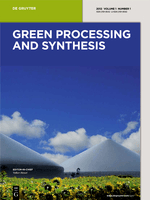
Green Processing and Synthesis
Fostering Sustainable Innovations in SynthesisGreen Processing and Synthesis, published by DE GRUYTER POLAND SP Z O O, stands as a vital open-access journal in the realms of Chemical Engineering, Environmental Chemistry, Fuel Technology, and more since its inception in 2012. With an impressive impact factor and currently ranked in the Q2 category across multiple domains, this journal plays a key role in disseminating cutting-edge research that addresses global sustainability challenges. The journal emphasizes innovative methodologies and sustainable practices that are crucial for advancing green technologies. Researchers, professionals, and students alike are encouraged to explore its extensive archive and contribute to the evolving conversation around environmentally conscious processing and synthesis techniques, all accessible freely since 2019.
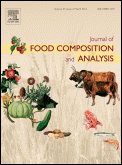
JOURNAL OF FOOD COMPOSITION AND ANALYSIS
Transforming Knowledge into Nutritional SolutionsJOURNAL OF FOOD COMPOSITION AND ANALYSIS, published by Academic Press Inc. Elsevier Science, is a leading peer-reviewed journal in the field of Food Science, recognized for its substantial impact on advancing research and knowledge within the discipline. With a commendable Q1 quartile ranking in the 2023 category of Food Science and a Scopus rank of 86/389, this journal holds a prestigious position, emphasizing its significance in crop and food quality research. The journal's scope encompasses a wide range of studies related to food composition, nutrition, and analytical methodologies, aiming to foster innovation and knowledge dissemination in food science. Although it operates under a subscription model, it remains an essential resource for researchers, professionals, and students seeking credible and cutting-edge findings. Established in 1987, the JOURNAL OF FOOD COMPOSITION AND ANALYSIS continues to be at the forefront of food science, contributing to the understanding of food quality and nutrition standards globally.
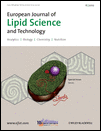
EUROPEAN JOURNAL OF LIPID SCIENCE AND TECHNOLOGY
Advancing lipid science for a sustainable future.EUROPEAN JOURNAL OF LIPID SCIENCE AND TECHNOLOGY, published by WILEY, is a reputable academic journal dedicated to advancing the field of lipid science and technology. With an ISSN of 1438-7697 and E-ISSN 1438-9312, this journal serves as a critical resource for researchers, professionals, and students interested in the bioengineering, industrial applications, and nutritional science of lipids. Covering a broad spectrum from biochemistry to food science, it holds distinguished rankings across multiple categories, including Q2 in Chemistry and Food Science, and Q3 in Biotechnology, showcasing its significance in the interdisciplinary study of lipids. The journal welcomes Open Access options, fostering the dissemination of knowledge and innovation in lipid research. With converged years extending from 2000 to 2024, this journal remains at the forefront of lipid-related research, encouraging scholarly contributions that push the boundaries of science and technology.

OCL-Oilseeds and Fats Crops and Lipids
Connecting Global Insights in Oilseeds and FatsOCL-Oilseeds and Fats Crops and Lipids is a renowned open-access journal published by EDP Sciences S A, specializing in the fields of agronomy, food science, and biochemistry. Since its inception in 2000, this journal has vigorously contributed to the advancement of research surrounding oilseeds and fats, addressing critical issues related to crop production, lipid analysis, and sustainable practices in food science. With an impressive impact factor reflected in its 2023 rankings—Q2 in Agronomy and Crop Science, Q3 in Biochemistry, and Q2 in Food Science—OCL stands out for its rigorous peer-review process and commitment to disseminating high-quality research. Its Scopus rankings further establish its reputation within the scientific community, occupying the 73rd and 64th percentiles in Agronomy and Food Science, respectively. This makes it an essential platform for researchers, professionals, and students focused on enhancing the understanding and application of lipid science and oilseed cultivation. Located in France, OCL encourages a global dialogue on innovations and discoveries that can drive the future of agricultural production and food technology.

Journal of Essential Oil Bearing Plants
Elevating the Study of Essential Oil Bearing PlantsJournal of Essential Oil Bearing Plants, published by Taylor & Francis Ltd, is a peer-reviewed academic journal that plays a critical role in the field of essential oils and their applications in analytical chemistry, biochemistry, and organic chemistry. With an ISSN of 0972-060X and an E-ISSN of 0976-5026, this journal has been a valuable resource since its inception in 2003 and continues to publish cutting-edge research through 2024. The journal is classified in the Q2 category for Analytical Chemistry and Q3 for both Biochemistry and Organic Chemistry as of 2023, reflecting its high citation impact and relevance in these scientific domains. Researchers and practitioners will find a wealth of knowledge in its pages, showcasing innovative methodologies and findings that advance our understanding of essential oils and their diverse applications. While the journal does not currently offer Open Access options, its rigorous peer-review process ensures that published studies maintain the highest standards of scientific integrity. Located in the United Kingdom, the Journal of Essential Oil Bearing Plants is dedicated to disseminating essential research findings to a global audience, thereby facilitating ongoing dialogue and development in this important field.
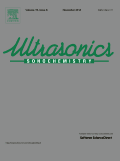
ULTRASONICS SONOCHEMISTRY
Unlocking the Power of Ultrasound in Chemistry and Beyond.ULTRASONICS SONOCHEMISTRY, published by ELSEVIER, is a pioneering Open Access journal that has been at the forefront of research in the fields of acoustics, ultrasonics, and their applications in chemical engineering, environmental science, and radiology since its inception in 1994. With an impressive Impact Factor and ranking amongst the top quartile journals across multiple disciplines such as Organic Chemistry, Inorganic Chemistry, and Environmental Chemistry, it serves as an essential platform for researchers and professionals seeking to disseminate their work and advance knowledge in sonochemistry and related areas. The journal's commitment to accessibility since 2021 ensures that high-quality research is openly available, thus fostering collaboration and innovation within the scientific community. As it converges into 2024, ULTRASONICS SONOCHEMISTRY continues to uphold its reputation for excellence and encourages the submission of groundbreaking studies that explore the synergistic effects of ultrasound in chemical processes.
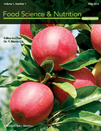
Food Science & Nutrition
Unveiling the science behind food for better health.Food Science & Nutrition is an esteemed peer-reviewed journal published by WILEY, dedicated to advancing the fields of food science and nutritional research. With an impressive impact factor and a prestigious Q1 ranking in the Food Science category, this journal stands out as a leading platform for innovative research, offering meaningful insights into the relationship between food composition and health outcomes. Since its transition to Open Access in 2013, Food Science & Nutrition has championed the global dissemination of knowledge, ensuring that vital research is accessible to researchers, professionals, and students alike. With a vast scope that encompasses both agricultural and biological sciences, the journal provides a comprehensive view of emerging trends, methodologies, and applications in food security and nutrition, making it indispensable for those invested in these critical areas.
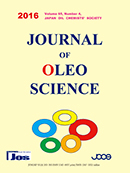
Journal of Oleo Science
Navigating the Challenges of Industry Through Oleochemical InsightsJournal of Oleo Science, published by the Japan Oil Chemists Society, stands as a pivotal resource in the domains of chemical engineering, chemistry, and medicinal applications, with a robust commitment to advancing knowledge in oleochemical research and technology. With an ISSN of 1345-8957 and an E-ISSN of 1347-3352, this open-access journal has been accessible to a global audience since 2021, facilitating the dissemination of high-quality scholarly articles and fostering collaboration among researchers. The journal, which has converged its publication scope from 2001 to 2024, currently holds a respectable Q3 ranking across multiple categories, reflecting its impact in the academic sphere. With Scopus ranks highlighting its position in general chemistry and chemical engineering, the Journal of Oleo Science not only serves as an essential platform for the latest developments in oleo science but also encourages the exploration of innovative approaches to tackling industry challenges. Articles submitted to the journal are subjected to rigorous peer review, ensuring that only the most significant and scholarly work is presented. By championing diverse perspectives and research findings, this journal is an invaluable asset for students, professionals, and academics dedicated to advancing the fields of oleochemistry and beyond.
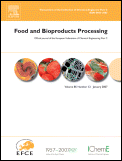
FOOD AND BIOPRODUCTS PROCESSING
Exploring breakthroughs in food and bioproduct processing.FOOD AND BIOPRODUCTS PROCESSING, published by Elsevier, is a leading journal dedicated to advancing the fields of biochemistry, biotechnology, chemical engineering, and food science. With a strong impact factor and robust rankings—Q2 in Biochemistry and Biotechnology, and Q1 in Food Science—it serves as an essential resource for researchers, industry professionals, and students alike. The journal focuses on innovative research and practical applications in the processing of food and bioproducts, spanning from raw material transformation to product development. By fostering the exchange of knowledge and ideas, FOOD AND BIOPRODUCTS PROCESSING aims to enhance food quality and sustainability while addressing global challenges in food security and environmental impact. With an accessible format and a diverse pool of contributors, this publication stands as a vital platform for groundbreaking studies, making significant contributions to the advancement of technology and practices in food processing and production.

MEAT SCIENCE
Charting New Frontiers in Meat Science ResearchMEAT SCIENCE is a premier peer-reviewed journal dedicated to the exploration of the science of meat and meat products, contributing significantly to the fields of food science and technology. Published by Elsevier Science Ltd, this esteemed journal has been in circulation since 1977 and is recognized for its rigorous standards and impactful research, as evidenced by its Q1 category ranking in Food Science for 2023 and a notable 96th percentile ranking in Agricultural and Biological Sciences. The journal fosters innovative discussions and dissemination of cutting-edge research, covering a diverse range of topics including meat quality, safety, technology, and consumer preferences. With no open access options, MEAT SCIENCE caters to a dedicated audience of researchers, professionals, and students, serving as a vital resource for advancing knowledge and practices within the global meat industry. By continually pushing the boundaries of meat science, this journal plays a crucial role in shaping future research and industry standards.